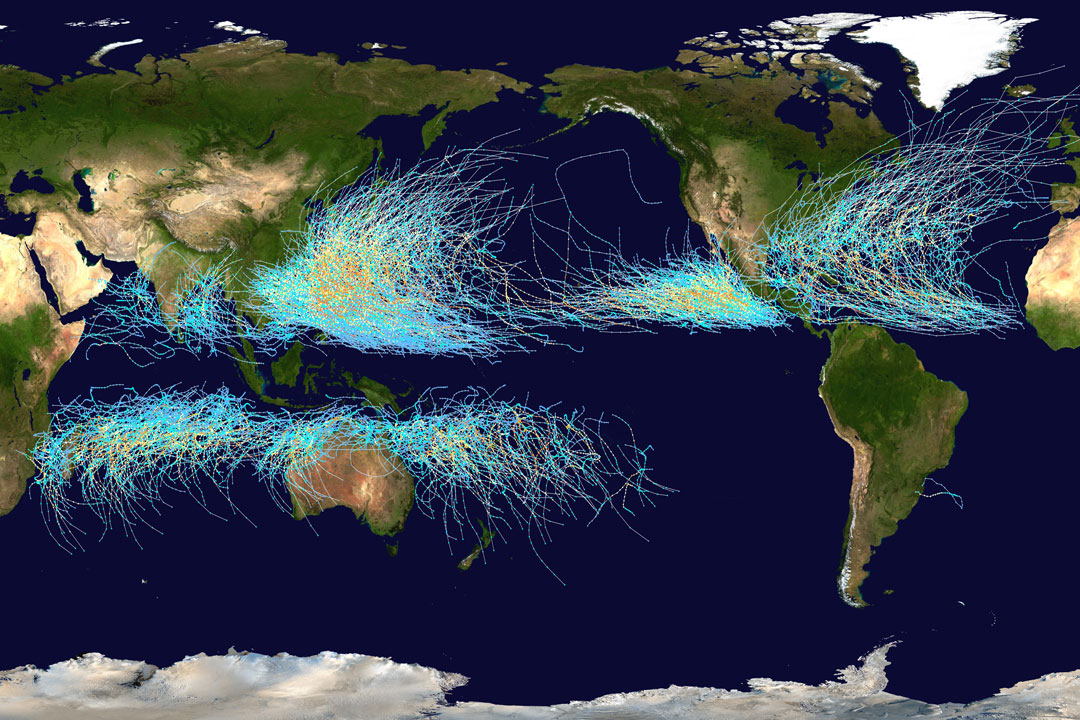2021年9月15日
Cyclone Paths on Planet Earth
Image Credit: National Hurricane Center, NOAA, NASA; Processing: Nilfanion (via Wikipedia)
Explanation: Where on Earth do cyclones go? Known as hurricanes when in the Atlantic Ocean and typhoons when in the Pacific, the featured map shows the path of all major storms from 1985 through 2005. The map shows graphically that cyclones usually occur over water, which makes sense since evaporating warm water gives them energy. The map also shows that cyclones never cross — and rarely approach — the Earth’s equator, since the Coriolis effect goes to zero there, and cyclones need the Coriolis force to circulate. The Coriolis force also causes cyclone paths to arc away from the equator. Although long-term trends remain a topic of research, evidence indicates that hurricanes have become, on the average, more powerful in the North Atlantic over the past 30 years, and their power is projected to keep increasing.
Follow APOD on Instagram in: English, Farsi, Indonesian, Persian, or Portuguese
Tomorrow’s picture: off the coast
地球上的台风路径
影像提供: National Hurricane Center, NOAA, NASA; 影像处理: Nilfanion (via Wikipedia)
说明: 飓(台)风出现在地球的那些地方?发生在大西洋的风暴系统称为飓风,在太平洋的称为台风,上面这张主题影像呈现1985年到2005年间的大风暴系统之路径。这张图证实台风通常出现在海面上,这样的地理分布很合理,因为蒸发中的暖热水体是生成台风的能量源。此外,影像亦证实台风不会穿越地球的赤道,也鲜少诞生于赤道附近,这是因为赤道的科氏力为零,没科氏力,台风就不会打转。科氏力也会影响到台风移动路径,从影像里可看出台风以弧状的轨迹离赤道远去。台风长期发生率仍然是科研的课题,但证据显示在过去的30年之中,北大西洋飓风的平均威力有增长,而且预期会持续增加。
在Instagram上关注APOD: 英语、波斯语、印度尼西亚语、波斯语或葡萄牙语
明日的图片: off the coast



